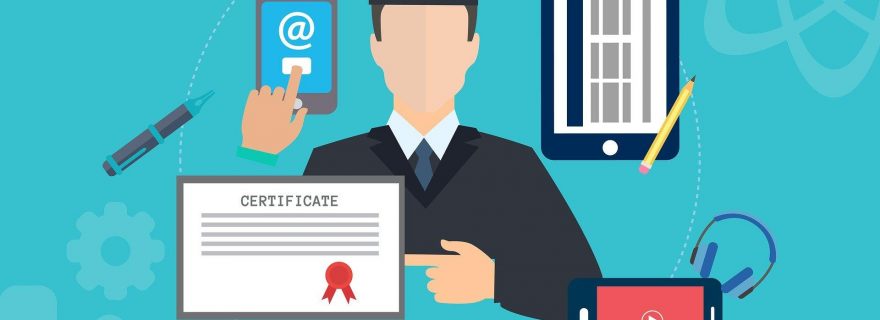Online education during COVID-19: Force majeure or the new frontier?
When COVID-19 forced the university to temporarily close in March, teaching staff had just one week to switch gears and get acquainted with online teaching. In the past six months, Security Studies tutors have familiarized themselves with all that online teaching has to offer, for better or worse.
Online teaching
One of the first classes that was taught completely online was Integrated Project 1 – a first year course that requires students to create an artifact aimed at bringing about social change. As a group project that depends on the application of both design science and artifact-specific knowledge, it was important to ensure active engagement during the sessions. This presented several challenges to the design of the online sessions.
First of all, on average, students find it harder to concentrate during an online session. As such, it is essential to strategically consider how to teach the material. One method that proved effective, was building on the ‘flip the classroom’ principle. Student were provided with 20 minutes of pre-recorded content that they would have to watch prior to class. The class itself would then be significantly shorter and focus solely on interactive exercises and guided group-work, instead of teaching new content. This structure also allowed for the inclusion of non-traditional teaching resources, such as podcasts or videos. Additionally, having an online platform like MS Teams allowed groups to work together in their respective channels during sessions, but also whenever it suited them outside of class. This gave tutors a better overview on how well students were coordinating with one another.
Another obstacle that people encountered when teaching online was the absence of interpersonal connection and body language. Indeed, it required some sleuthing to recreate the same opportunities for students to chat freely, but it was certainly not impossible. Encouraging students to turn on their camera made it easier to gauge their response to the session. Moreover, by incorporating check-in / check-out moments at the start/end of each sessions, tutors consistently created moments for students to tell us how they were doing. While there is little spontaneity to this model, one could introduce this by letting students chat freely during breaks.
There are also advantages to online teaching, as it forced a creative and critical evaluation of current teaching methods. Online teaching facilitates global learning to an extent that physical teaching cannot, or had yet to develop. Inviting a lecturer from across the world has become much more normalized. Moreover, online teaching has led to improved interactivity, as a result of increased use of non-traditional materials and online software, and renewed focus on exercises that would otherwise never have been explored or considered. Most importantly, online teaching has opened the door to tailored educational experiences. Having the freedom to learn when they want has worked to the advantage of students who experience extenuating circumstances. We consider here the experiences of students with disabilities who need more time and can re-watch the lectures at a speed that works for them, or students who are informal carers and can now better plan their study moments.
Hybrid model
However, students have also increasingly experienced feelings of isolation, as it is hard to connect to peers. What is more, there are also teachers who miss traditional forms of teaching and the spontaneous interaction that a physical classroom brings. To accommodate those needs, while still maintaining a safe learning environment, hybrid learning was developed.
Simply put, hybrid learning is a combination of online and offline learning where smaller groups of students are physically present during sessions, while others participate online. By making use of MS Teams and an external camera and microphone, this setup was trialed in select Skills Lab 1 and Skills Lab 2 classes on a voluntary basis. Interactivity is at the core of these labs, as they aim to teach students both academic and professional skills through the Explore, Understand, Do pedagogy.
Exercises tailored to online learning easily fit within a hybrid teaching style. With almost every student owning a laptop, students both online and offline can work together as effectively as they would have in a traditional classroom setting. However, hybrid learning allowed students to socialize more easily, and gave first year students a taste of what would have otherwise been their normal university experience. Students also acknowledged that participating seemed less daunting and sometimes even more natural in a physical classroom, when compared to an online setting.
Still, there are some drawbacks - while a blended model can improve the experience of physically present students, it remains a challenge to pay equal attention to those participating offline and online simultaneously.
Additionally, with all the merits of hybrid learning comes the dread of technical difficulties. Malfunctioning cameras and microphones, of course, also disrupt online teaching sessions, though it is at least a shared experience. Therefore, safeguarding the principle of equal opportunity to education – be it online or offline - remains a primary concern when designing hybrid sessions.
Online teaching has become the new norm due to force majeure, but it has also brought us to a new frontier of education – making use of new technologies to innovate both what we teach, and the way in which we teach it. What is more, while far from flawless, hybrid learning comes closest to the pre-COVID-19 teaching setting. If safety protocols allow it, it is a great way of combining the best of both innovative and traditional teaching methods.



